Parish Church of St Hilda Hartlepool
Religious Place In Hartlepool, County Durham
An imposing church that can be seen for miles at Hartlepool Headland.
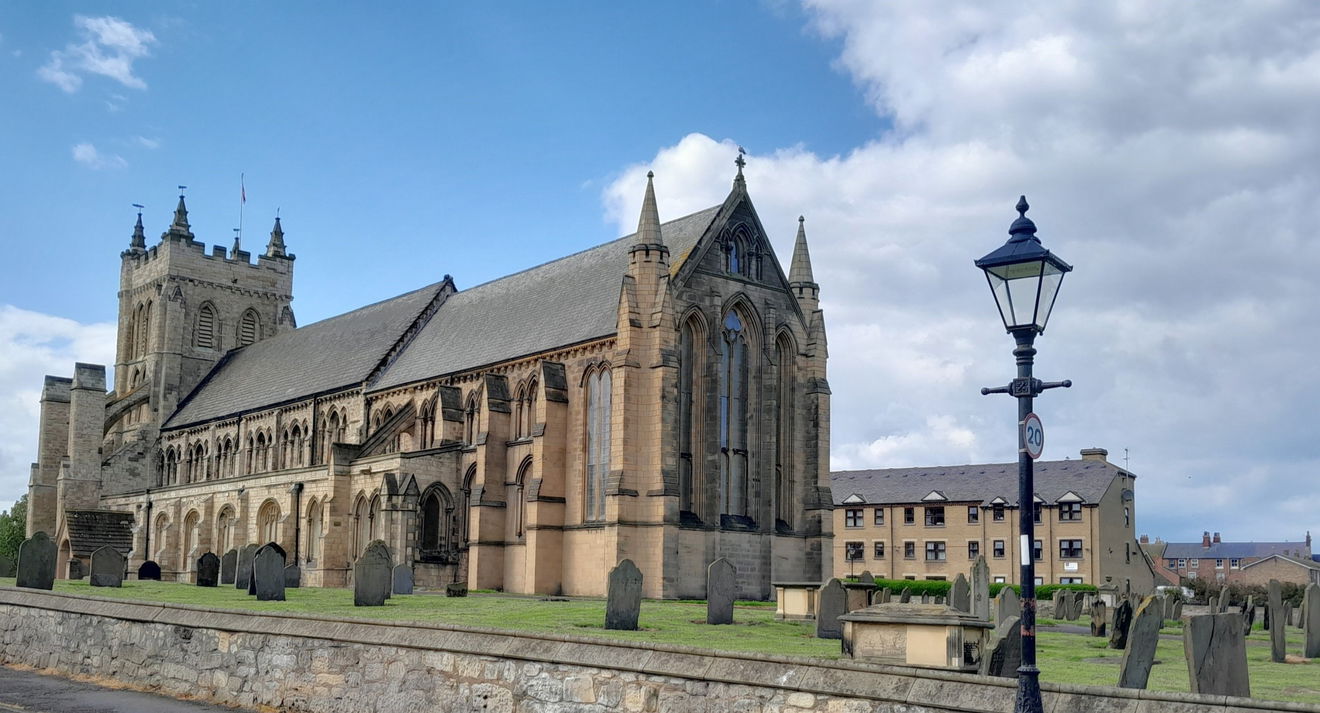
There is much to see at Hartlepool Headland and the Church of St Hilda is a prominent building here. If you are lucky enough to be there when it is open (please check their Facebook page) you will find that the inside is as appealing as the outside.
I visited on a chilly Saturday afternoon and appreciated the warm reception from Ian x 2 and Anne—special thanks to Ian Lightfoot who gave detailed history and went away and researched many questions for me.

The Church of St Hilda is named after the first Abbess at Whitby. St Hilda came to Hartlepool in 648 AD and was in charge of the monastery here, which St. Aidan founded in AD640. St Hilda then got a promotion to Whitby.
The church stands on the highest point of the southern peninsular, hence it is viewed from afar.
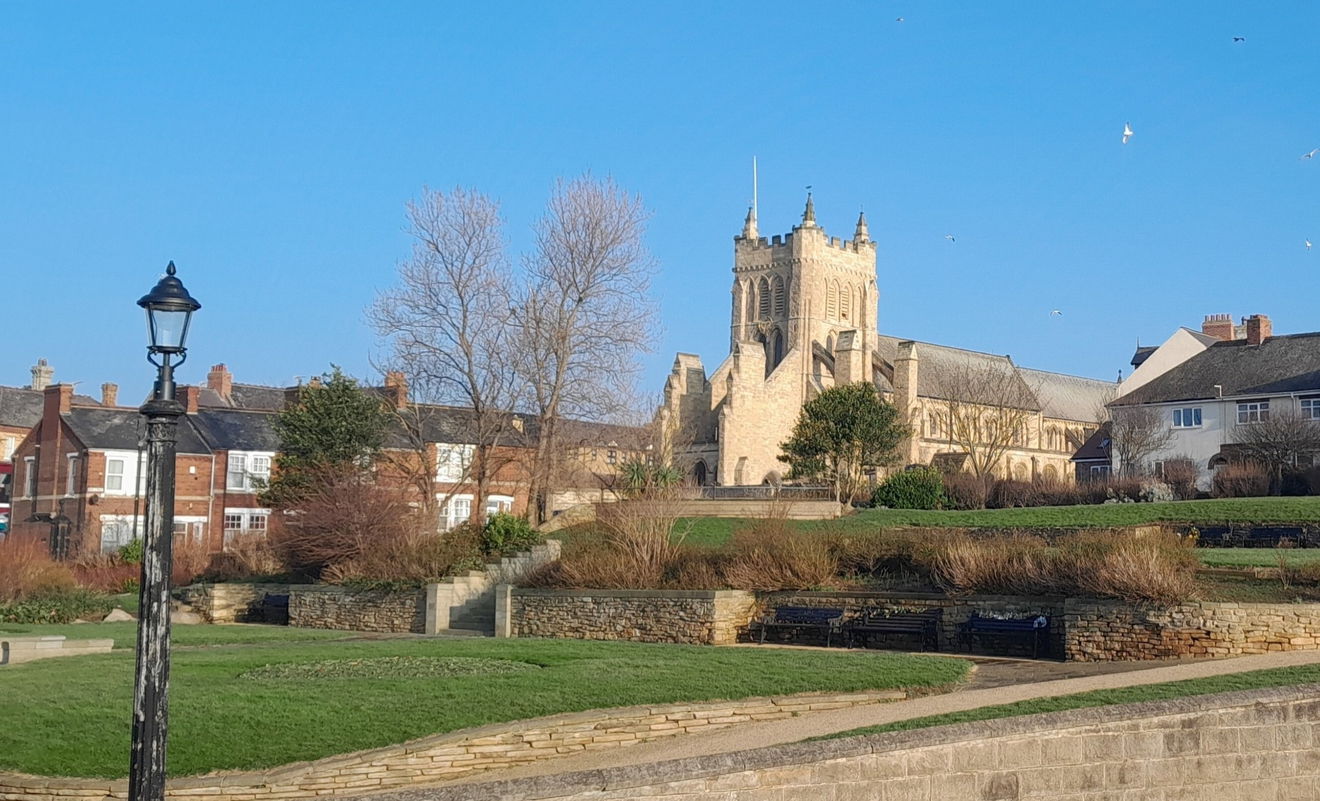
This building dates from around 1190. The style is described as Early English. There was an earlier Norman church to which the southern inner doorway dates.
Do you suppose there could be parts of the church that used stone from the monastery?
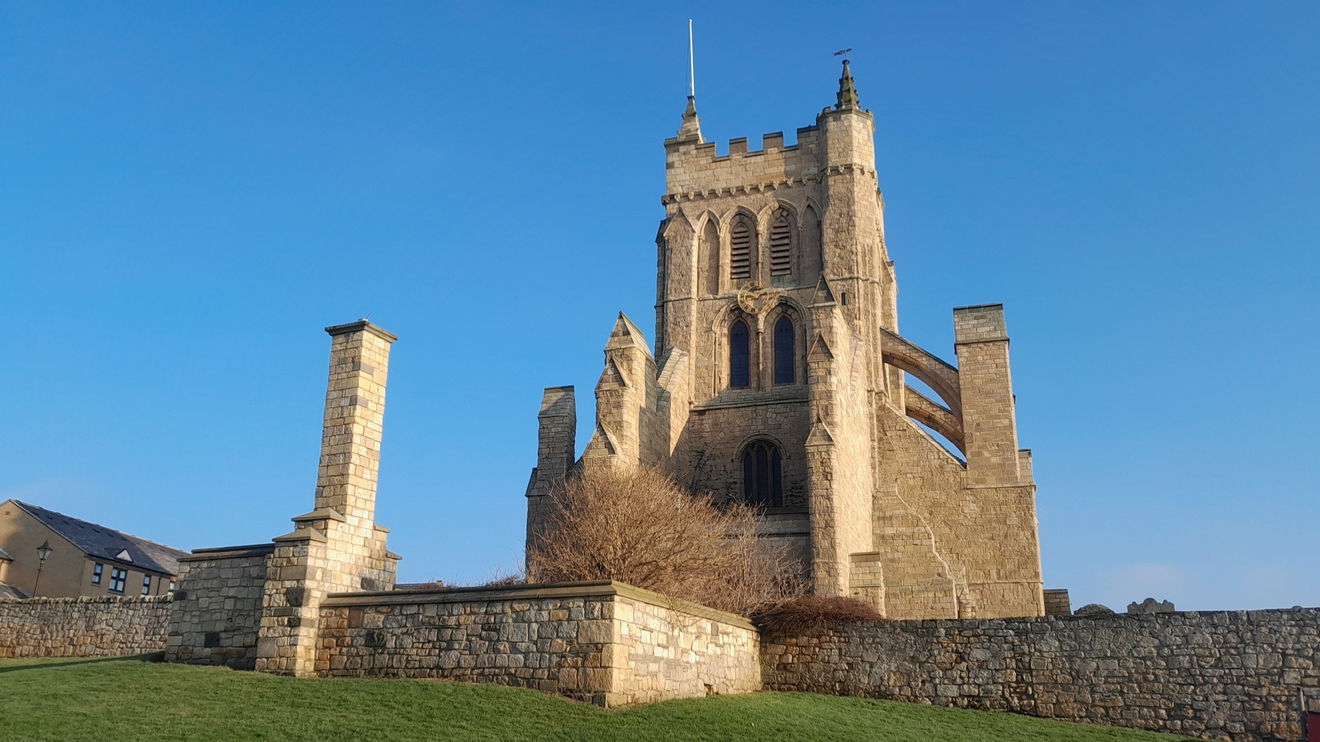


The de Brus family is thought to have built St. Hilda as a place of sepulture worthy of their importance.
The website for the Parish Church of St Hilda tells us:
'Among the knights who came with William the Conqueror in 1066 was Robert de Brus. His son married Agnes, the daughter of the Lord of the Manor at Hart, thus starting a connection with Hartlepool which lasted for many generations. It is generally believed that St Hilda's was built by the grandson of Robert and Agnes, Robert de Brus IV - hence the Bruce Chapel and Tomb.'
Do you recognise the name de Brus? Yes, it is the same family of Robert de Bruce (1274 to 1329) King of Scots 1306 to 1329. Robert de Brus IV would have been his grandfather.
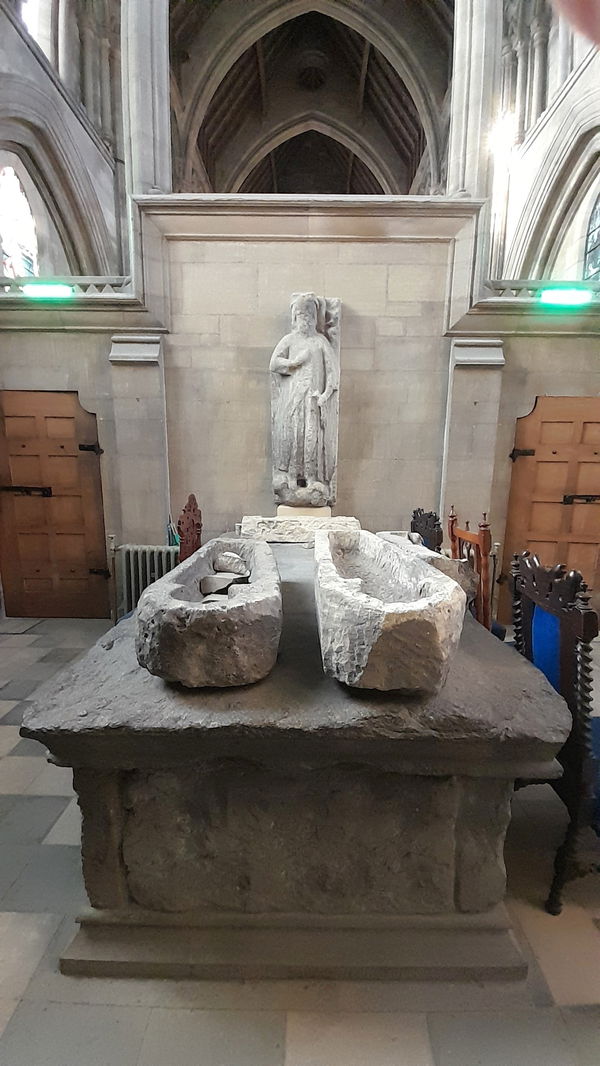
The 4 stage tower and flying buttresses date to the mid-13th century. There is an educated theory that whilst the tower was under construction the builders realised that the foundations were not substantial and would not be enough to sustain the tower so the buttresses were built with more robust foundations under them.
Those mighty buttresses have since prevented the tower from collapsing.


The chapel is late 13th century. The aisles and chancel were mainly 12th and 13th century and the aisles were given a makeover in the 15th century. It seems that new windows may have been inserted about this time; now there are modern copies. There is brass in the floor of the nave immediately in front of the chancel arch, with a figure of Jane Bell, who died in 1593. From here on in time, this church had more makeovers than David Bowie!
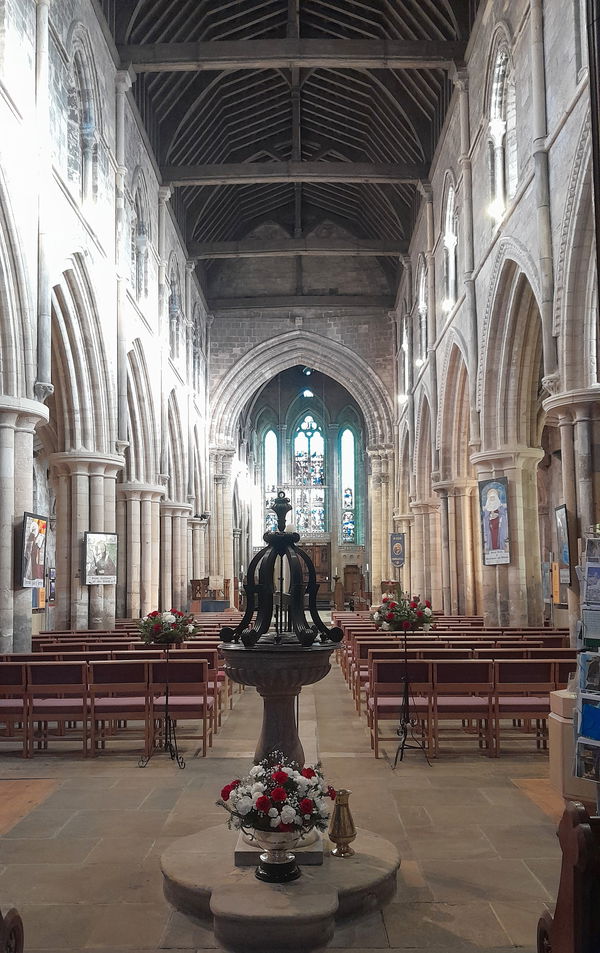
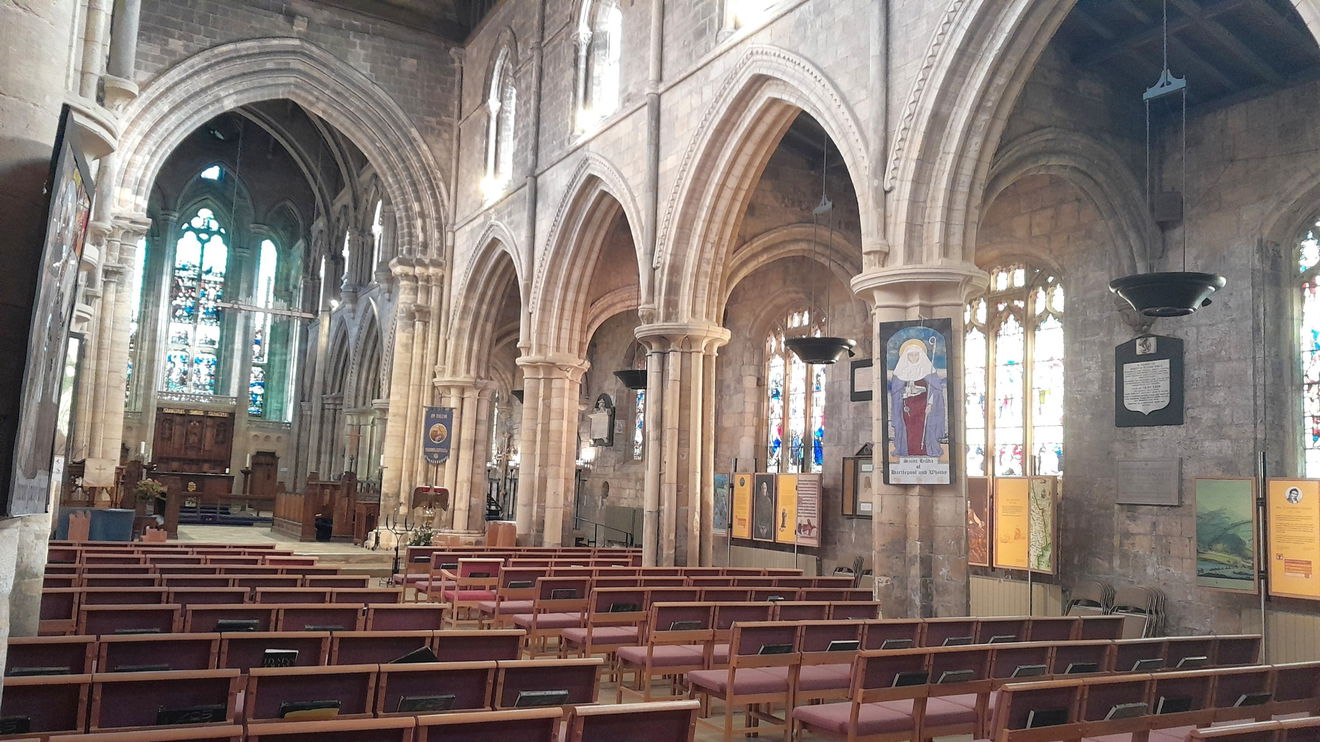
From British History online there is a helpful plan of St Hildas dating various parts. If you are questing for more in-depth information try Parishes: Hartlepool | British History Online. It will tell you of the deplorable state it was in in the 18th century
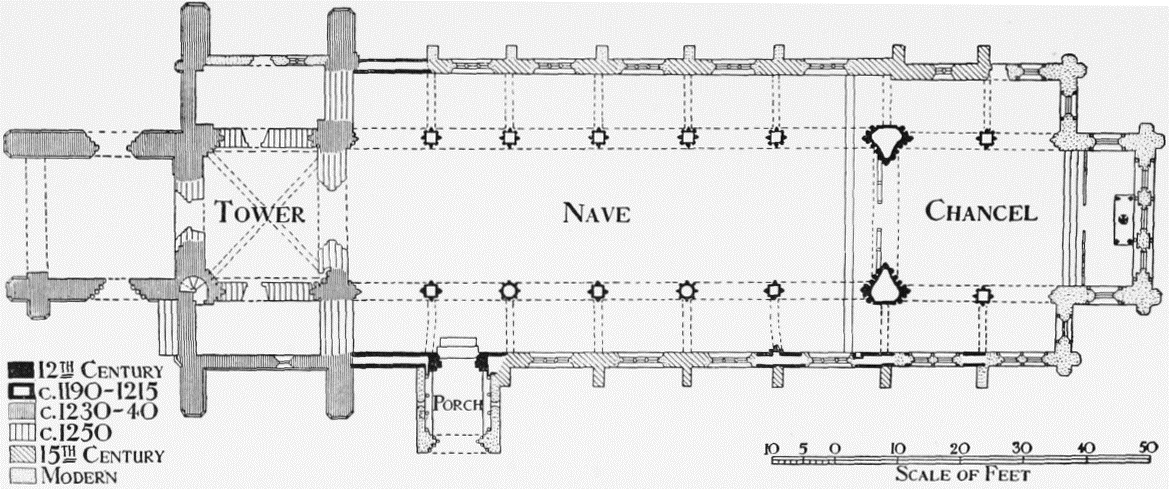
As a common practice in Victorian times, the church was renovated, and often in churches, someone has made a scale model; in this case, there are two. One is made from cork by a remarkable lad of 10 years old in 1870. The information describes how the church has changed.
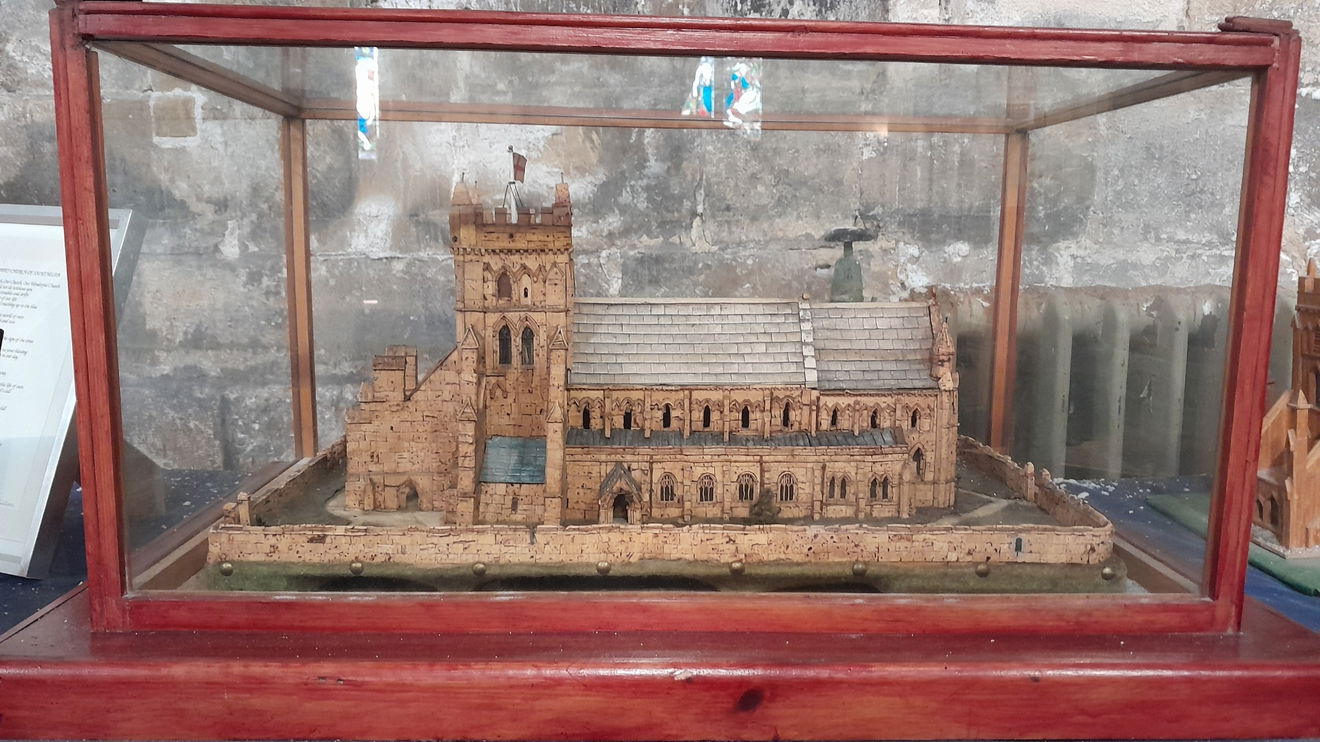
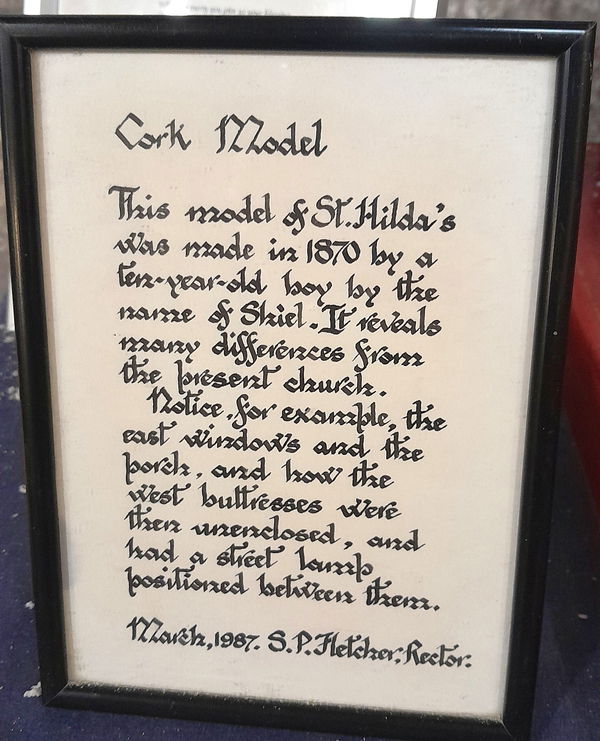
More renovation took part between 1925 and 1932, Ian explains:
'The church was extended due to the main chancel arch collapse and it was decided to extend to bring the De Brus Tomb which had always been outside.'
The extension is in keeping with the Early English style, so you would hardly notice this east end is newer.
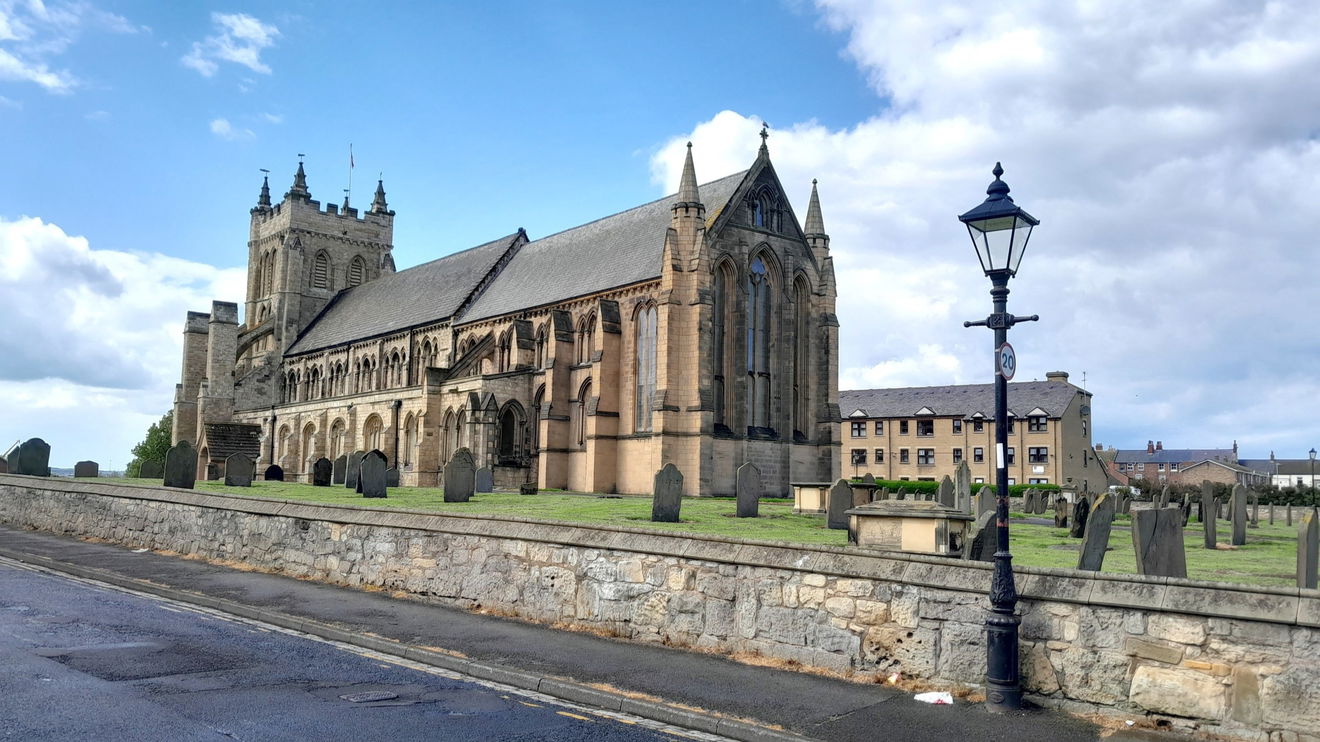
Inside the de Brus Chapel are some useful information boards. One pertains to the south side of the church and looking up at the arches they are a tad crooked.
St Hildas became the proud owners of Grade I Listed status in 1949.
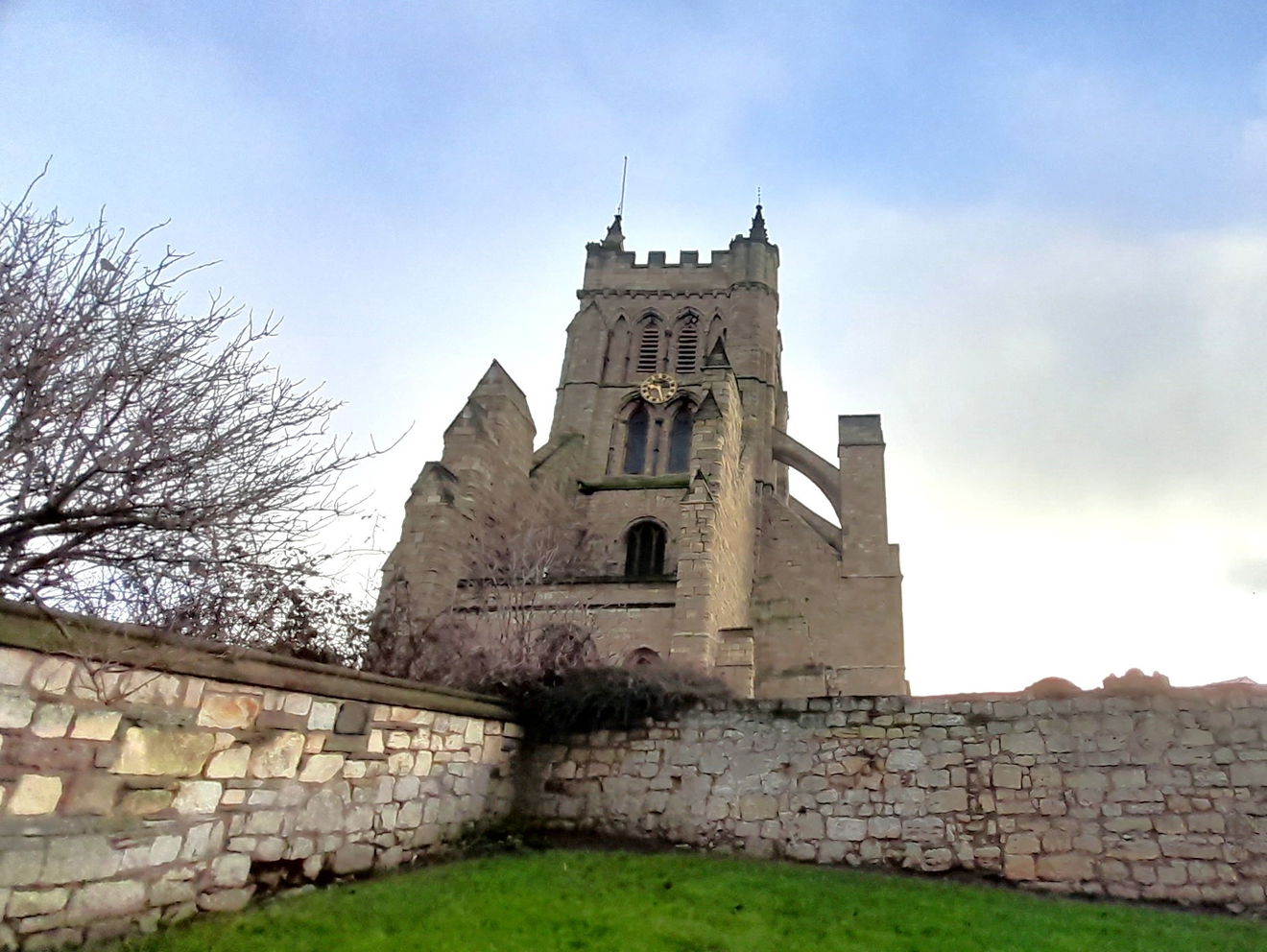
There is marvellous wood furniture around the church which may or may not have been created by some remarkable artist of the time.
The reredos behind the altar is magnificent. When I 'researched' who made it, 'Bing' threw up:
'Edward Burne-Jones, a pre-Raphaelite artist, and William Morris, a renowned designer. They collaborated on this beautiful piece of art, which is a stunning example of their craftsmanship and artistic vision.'
They were both devout Christians and enjoyed church work. They inspired Robert 'mouseman' Thomas who has work here (see next paragraph). Unfortunately, there was no citation regarding the reredos, so if you know please let us know.
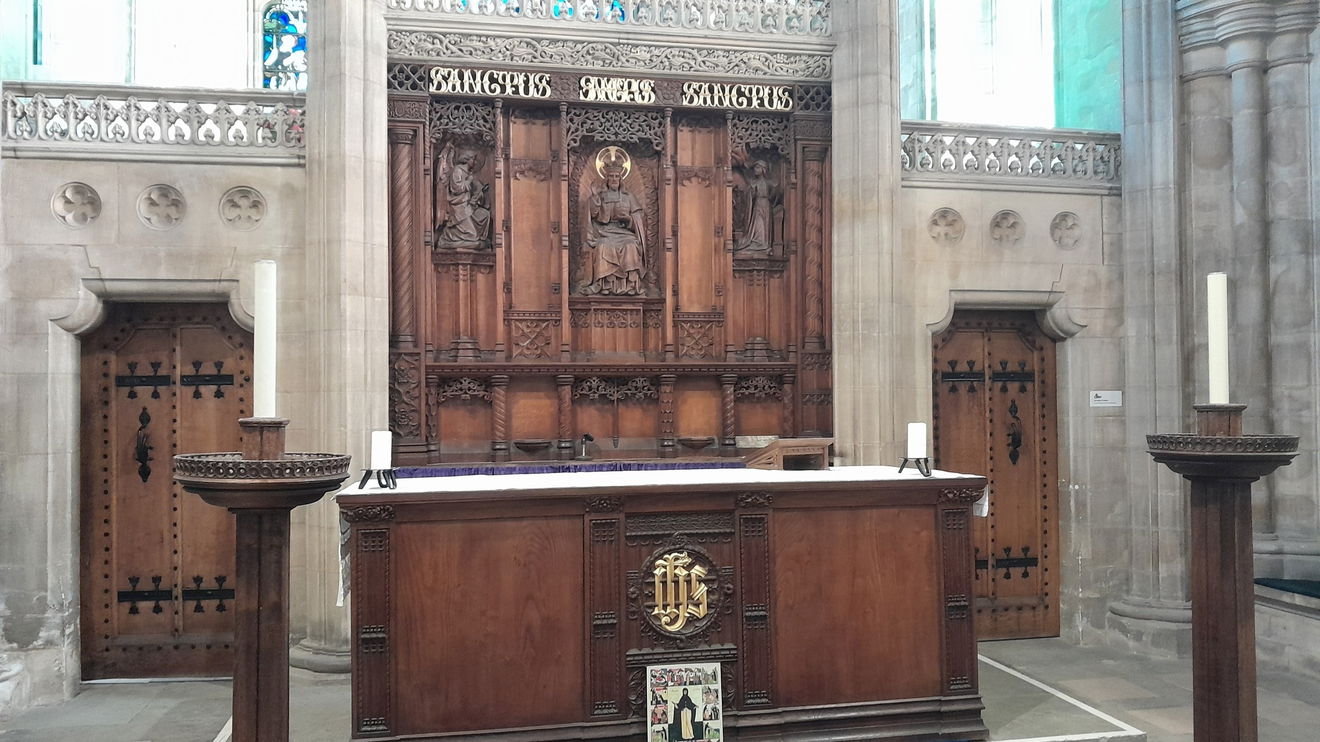
Robert 'mouseman' Thomas (1876 to 1955) worked in this church and you can see his trademark, but you may have to ask an attendant/guide. The mice can be dated as from 1930's the mouse had no front feet. I suggest this may be earlier and tie in with the renovations of 1926?
There is more detail of Robert Thomas at St Mary the Virgin Easington Village.
You can see the Harts (Hartlepool's ensigna) created on the end of the pews at the west end of the church. Could this be the work of Mr Thomas?
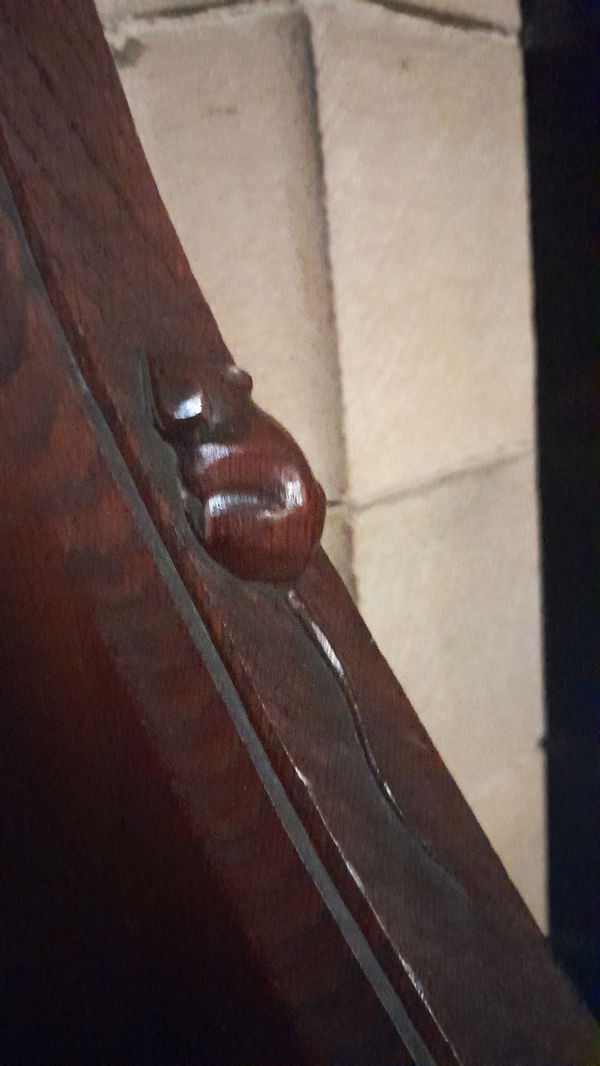
The rood now sits at the west end of the church, moved by Ronald Sims. You may have missed it as you walk into the church. It was made of oak in 1894 by Charles Hodgson Fowler (1840 to 1910) a local resident and a renowned craftsman in the area.
There is also a font that dates to 1728 and was a gift from George Bowes (1701 to 1760) of Gibside fame.


Circa 2000 there were alterations and they were the responsibility of Ronald Sims (1926 to 2007) an ecclesiastical architect responsible for the same challenge of repair and renovation at St Nics Durham City. As Wikipedia says:
'His style combined modernism with a respect for tradition and particularly the Arts and Crafts movement.'
Ronald Sims would have been around 74 years old when it took on the repairs and renovation of St Hildas. He designed a lot of the new woodwork, and notably a cross. As Ian says:
'The cross was designed and made by the Architect who had the Rood screen moved back in 2000, he made it even though he is an architect.'
The letters above the cross INRI are for the Latin Iesus Nazarenus, Rex Iudaeorum In English it means Jesus of Nazareth, the King of the Jews. This is what Judas is believed to have said to betray Jesus. In Roman times it was customary to inscribe the reason for their crucifixion above their heads.
The previous chancel cross that was hung above the rood is now on the south wall.
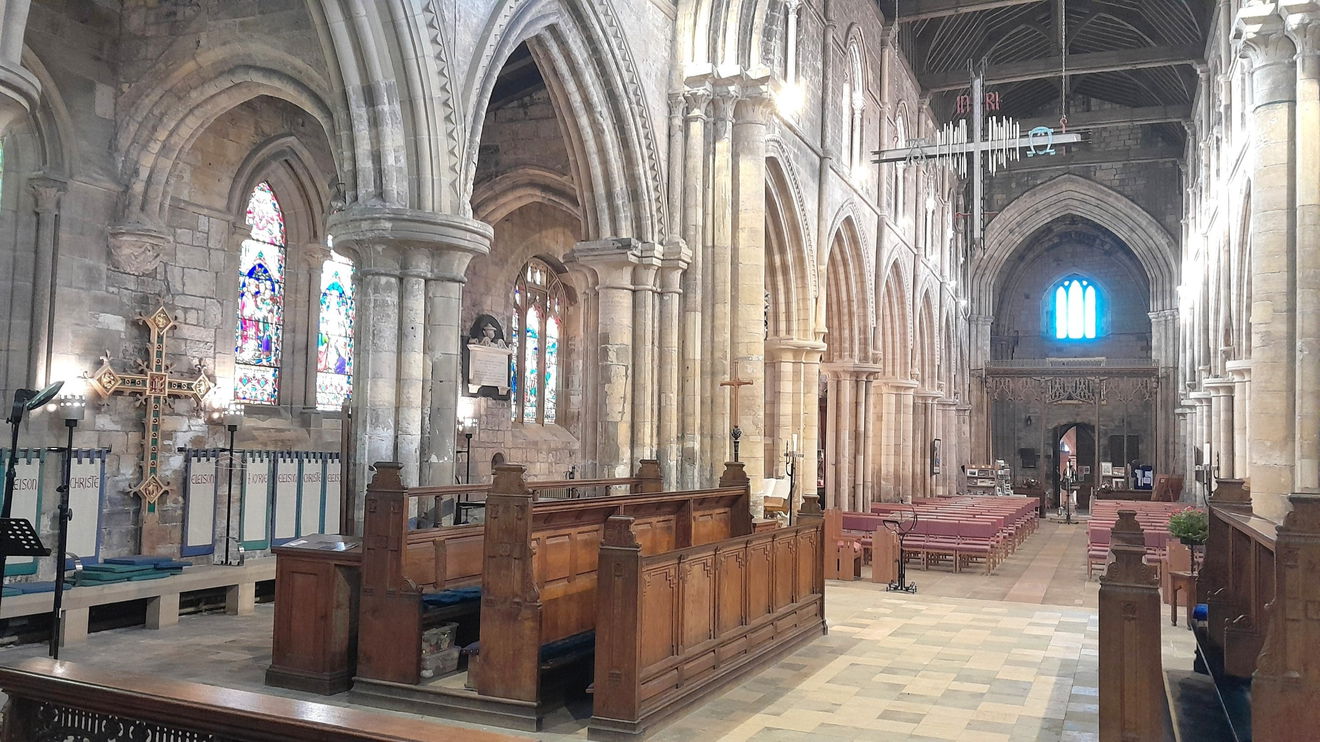
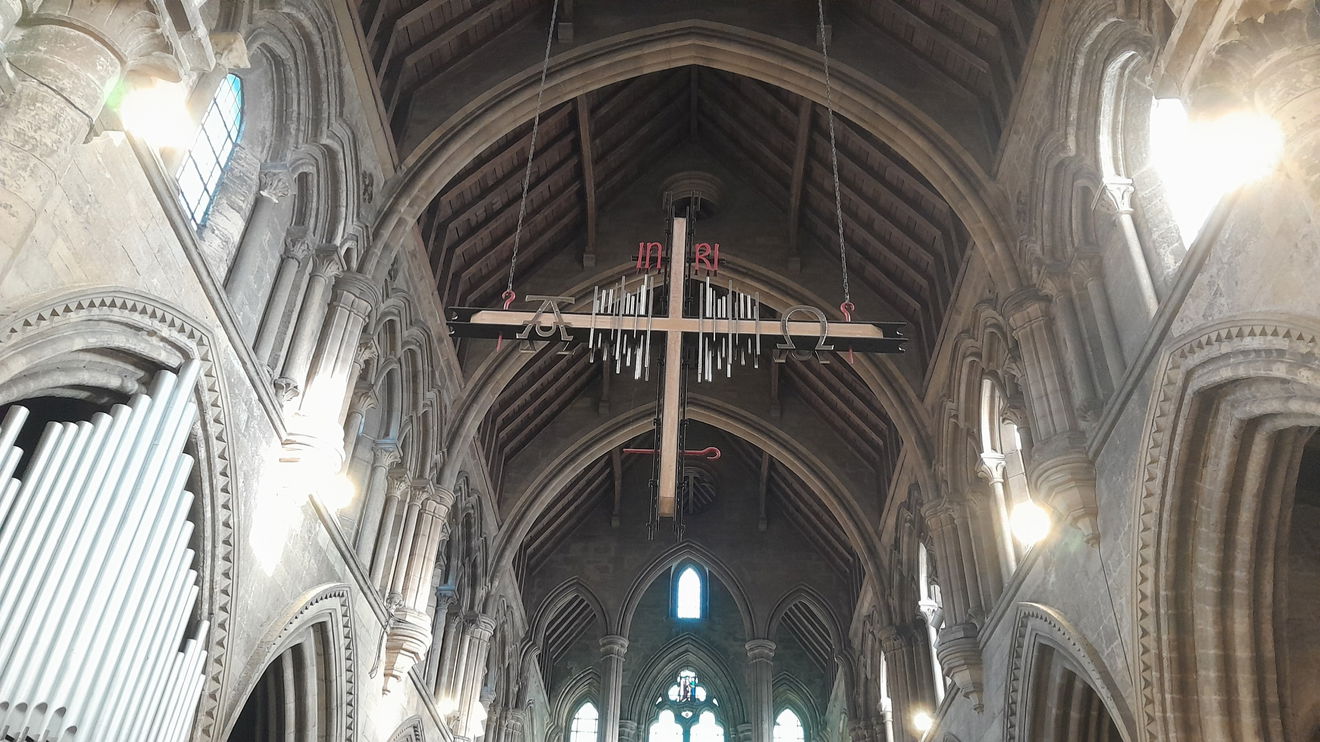
There is much to marvel in this church and the beautiful stained glass windows date to the 19th and 20th centuries.
There is an Anglo-Saxon headstone belonging to a nun called Hildthryth with Old English runes.


Unfortunately, you will not hear the bells at the moment as they were originally hung for change ringing where the bell swings perpendicular. The tower is too weak structurally to withstand this now.
The 3 bells were cast in 1819 by Thomas II Mears. The tower has been restored many times for example 1838, 1893 and 1930. The clock is in good order and is regularly serviced by a specialist company.
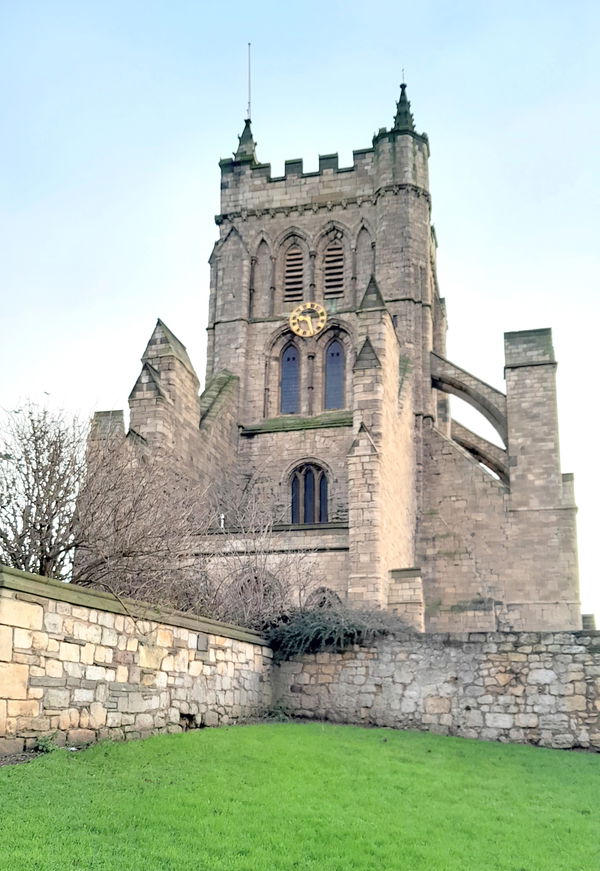
It is worth a wander around the outside and I was intrigued by the age of the graves and asked Ian about the oldest grave. He did some digging around and came back to me with:
'No-one knows the oldest grave in the churchyard as burials go back as far as Anglo Saxon times-7th century. [Time Team from BBC found remains in 2000.]
1852 was the last official burial, and they then moved to Spion Kop cemetery that year - but I did not find any record of burial names- and there would have been family members requiring burial with their loved ones after 1852 for sure - but from that year they slowly stopped. For example - Catherine Sedgewick was buried in 1850, and her grave is clearly marked. Her son, Robert, asked to be buried with his mother, and so his request was carried when he passed on in 1862.'

As a caveat emptor; some suggest that it was not the de Brus family, but a more local Nobel family.
There is plenty else to see around the Headland, check out the Fabulous North map for some canny ideas. You may need several visits to explore.
Get 2 points if you have visited this place. Already visited by 53 VIPs.
Login to the VIP area to add places to your bucket list, mark them as visited and more importantly see where you rank on the league table.
How To Find Parish Church of St Hilda Hartlepool
Where Is Parish Church of St Hilda Hartlepool?
Lat / Long
54.695437, -1.182134
What three words
Where To Park For Parish Church of St Hilda Hartlepool?
Lat / Long
54.695788, -1.182787
What three words
There is a carpark next to west end of the church. It is called Headland car park, with the entrance on Middlegate.
Contributed by Rosalind Parker
Thank you for reading. I hope it sparks your interest. It’s always a pleasure to get out and explore, whatever the weather. I enjoy uncovering little snippets of information, especially when they’re obscure, amusing, or meaningful. All photos were taken on a mobile phone.
More Places from Rosalind
More Places In Hartlepool
Find more fabulous places in Hartlepool, County Durham and if you know of a place we haven't listed, then let us know.
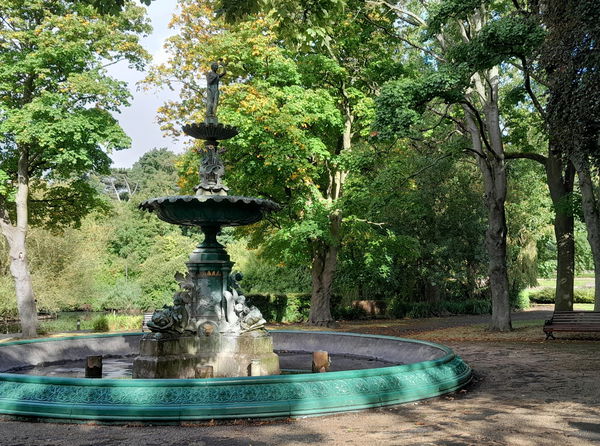
Ward Jackson Park
Landscape Hartlepool County DurhamA well-kept park with Victorian and Edwardian Features, modern works such as spiders and mosaics, plus the poignant ‘Heroism of the Silent Gun’ Boer War memorial.

Hartlepool Art Gallery
Art Hartlepool County DurhamAn art gallery located in the former Christ Church in Hartlepool.
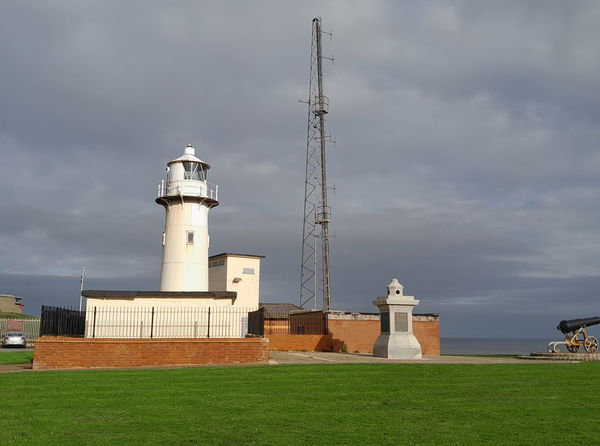
The Heugh at Hartlepool Headland
Lighthouse Hartlepool County DurhamThis peninsula has several pleasing aspects such as a lighthouse, a cannon and the goddess Nike atop the war memorial.
More Religious Places
So this religious place wasn't enough and you want more? Don't worry we have you covered.

Shap Abbey
Religious Place Penrith CumbriaPeaceful, ruined 12th century abbey managed by English Heritage
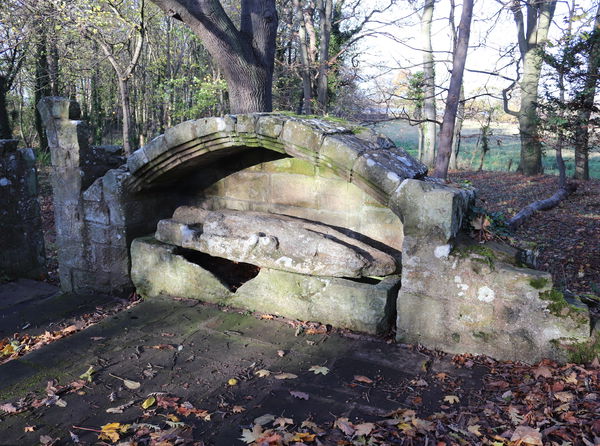
Luffness Friary
Religious Place East Lothian BordersVisit the ruins of a once-thriving Carmelite monastery in Aberlady, East Lothian.

The Church of St Gregory The Great
Religious Place Wooler NorthumberlandA beautiful church filled with art, history and culture in the fork of the road up to the College Valley.
Never Miss A Fabulous Place
If you are afraid of missing out on all the fabulous places we post, or just want to be the first to know, then sign up to the Fabulous North.
Each week we will email you all the brand new places that we visit.
Sign Up To AlertsFind Us On Facebook
We post all our new places daily on our Facebook Groups page, so join the group today and be notified when we add a new place.
Join Our Facebook GroupParish Church of St Hilda Hartlepool was listed in Religious Place // County Durham // Hartlepool

